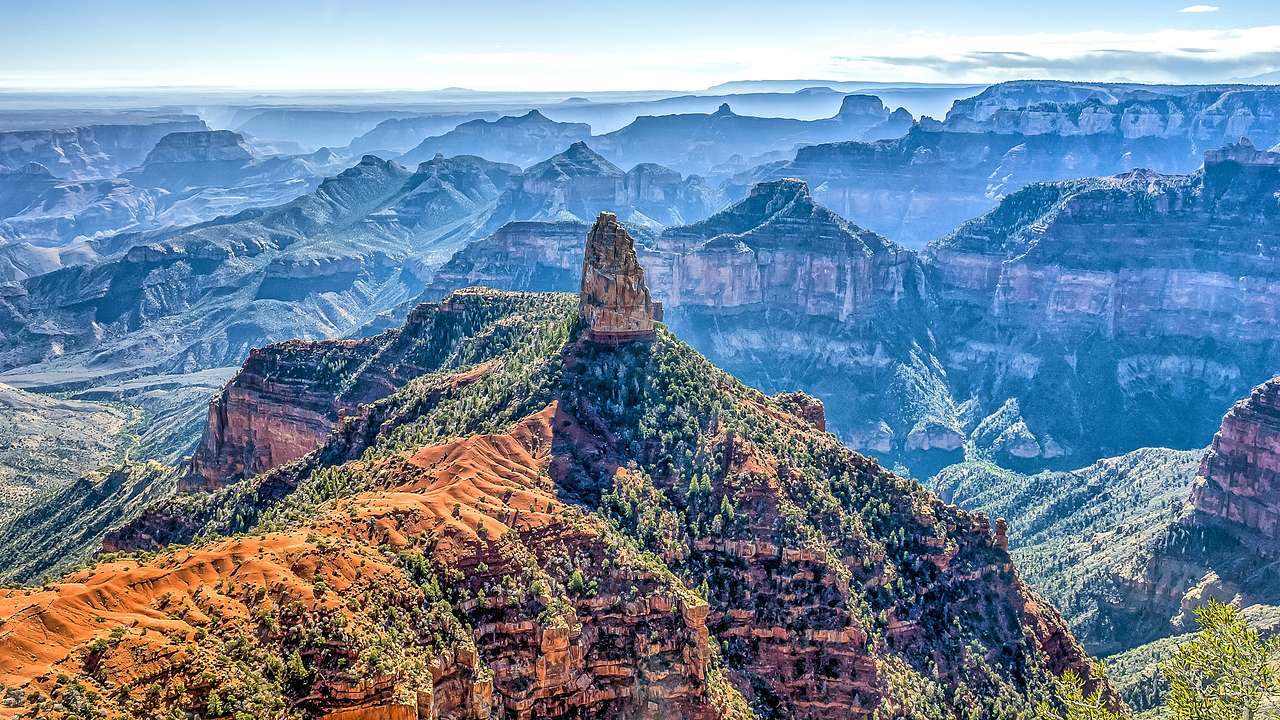North America is a region that epitomizes diversity, beauty, and culture. It is home to myriad landmarks that attract visitors from around the globe. From towering skyscrapers to natural wonders, these sites encapsulate the essence of American history, ingenuity, and natural splendor. One must ponder, what makes these landmarks so remarkable? Is it their historical significance, architectural prowess, or the breathtaking vistas they offer? As we traverse through the iconic landmarks of North America, we uncover not only their allure but also the challenges they face in an era of rapid climate change.
To begin with, no discussion of North America’s landmarks can commence without mentioning the statue that symbolizes freedom and opportunity: the Statue of Liberty. This colossal neoclassical sculpture stands tall on Liberty Island in New York Harbor. Gifted by France, the statue has become an enduring symbol of hope for countless immigrants. Yet, as rising sea levels threaten coastal cities, one must ask—what will become of this emblem of perseverance if climate change continues to escalate?
Moving across the continent, we discover the majestic Grand Canyon, a testament to nature’s artistry carved over millions of years. Its vast expanse of layered rock formations and vibrant colors coalesce to create breathtaking vistas that draw millions of tourists annually. However, the surrounding ecosystems are fragile. Climate change poses a serious risk, affecting water resources critical to sustaining both human activities and wildlife. If the Grand Canyon could speak, would it implore us to act before it, too, becomes a casualty of our neglect?
In stark contrast to the natural grandeur of the Grand Canyon stands the architectural marvel of the Golden Gate Bridge in San Francisco. This suspension bridge, with its iconic orange hue, is not only a feat of engineering but also a vital transportation link connecting San Francisco to Marin County. Yet, it is not impervious to the challenges posed by climate change. Increased fog and rising tides threaten its structural integrity, raising critical questions: Can we protect such monumental structures in the face of impending environmental crises?
Further north, we find the enchanting Niagara Falls, a natural wonder that straddles the border between the United States and Canada. The sheer magnitude of water cascading over the cliffs is breathtaking, but the impact of climate change is insidious, affecting water levels and the surrounding ecology. Local flora and fauna that depend on the falls may find themselves at risk. As we marvel at the beauty of this site, we must also contemplate the responsibility that comes with preserving it for future generations.
Traveling towards the east, we encounter Mount Rushmore, which immortalizes four American presidents: George Washington, Thomas Jefferson, Theodore Roosevelt, and Abraham Lincoln. This monumental sculpture carved into the Black Hills of South Dakota is an emblem of American identity. Yet, the drift of the surrounding soil and rocks due to climate fluctuations poses risks to the granite faces. It prompts a question: How can we reconcile our desire for commemoration with the imperative of environmental stewardship?
No discussion of North American landmarks would be complete without mentioning the historic ruins of Chichen Itza in Mexico. This UNESCO World Heritage Site, known for its impressive pyramid known as El Castillo, serves as a reflection of the advanced civilization that once thrived there. Climate change threatens not just the structure itself but the entire archaeological site. Changes in rainfall patterns can increase erosion, jeopardizing the legacy of this ancient civilization. Are we prepared to prioritize preservation over progress?
As we traverse this continent, the juxtaposition of man-made wonders against the backdrop of nature’s majesty becomes evident. The Walt Disney World Resort in Florida presents a different type of landmark—an entertainment paradise that attracts millions each year. However, as climate change intensifies, the surrounding natural landscapes are progressively at risk from hurricanes and rising sea levels. Are we willing to confront the reality that our recreational pursuits may come at the expense of the environment?
Finally, we must acknowledge the plight of unique local landmarks, such as the shifting sands of the Great Sand Dunes National Park in Colorado. This extraordinary landscape is not only picturesque but also a vital ecosystem. Climate change has the potential to alter wind patterns and sediment availability, posing a threat to the very dunes that create its fascinating beauty. How can we foster a harmonious coexistence with nature while enjoying our national treasures?
In conclusion, the famous landmarks of North America are much more than mere attractions. They are cultural and natural legacies that encapsulate the shared history and aspirations of its people. However, as we celebrate their grandeur, we also face an undeniable challenge: the urgent need for environmental stewardship. The question now stands—what will we do to ensure that these symbols of human achievement and natural beauty endure for generations to come? The path ahead is fraught with obstacles, but by adopting sustainable practices and advocating for responsible policies, we can work to protect these landmarks against the adverse effects of climate change. The future of North America’s treasures rests not only on the strength of their structures but on the commitment of its people to foster a resilient and sustainable relationship with their environment.
